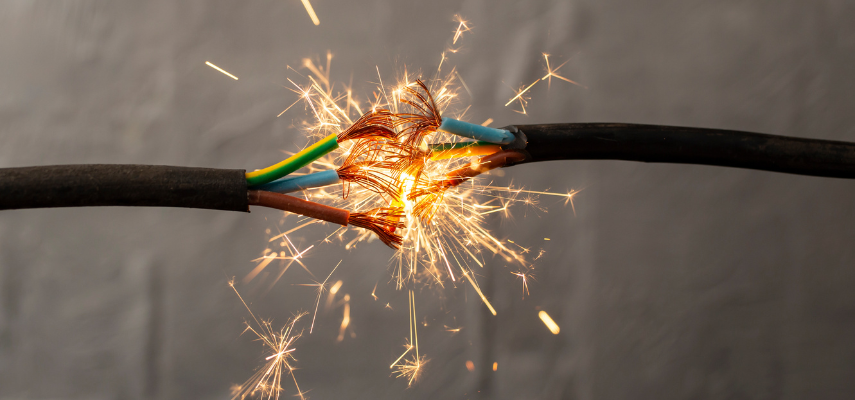
Load-shedding has become a distressing constant for most South Africans, leading to unprecedented rates of appliance destruction and many devastating house fires. This demonstrates the critical need for vigilance and adequate insurance coverage.
While some insurers have chosen to withdraw coverage for power surge-related events, due to the severity of the risks involved, at Barker, we feel differently.
We are committed to supporting our clients, and working together, through these “darker times”, to make it through this stronger and wiser. Dealing with load-shedding is stressful enough, so we certainly don’t want to add to this stress by eliminating power surge and load-shedding cover.
As a first step to supporting our clients through this, we are distributing FREE high-quality surge protection devices to all qualifying clients. All you need to qualify is Buildings or Household Contents cover. We have recently sourced the highest spec device in the industry – one offering 50kVA protection – a big difference to most devices that only offer 10kVA protection. These high-quality devices offer protection through installation to your home mains distribution board. Click HERE to request yours.
Recognising the Risks
Load shedding poses immense risks to both appliances and property.
When the electricity from the power grid is restored, the resultant surge of power can cause irreparable damage to sensitive devices, leading to costly replacements. As most electrical devices are not designed to be turned on and off continuously, the extended load-shedding is causing an increase in device circuitry shorting, which in some cases is leading to sparks, flame, and fire. The recently increased occurrence of house fires for our clients, and other insurers in the industry, emphasises the urgency of both implementing protective measures and ensuring the cover in place for your devices and property is sufficient.
To further underscore the significance of adequate insurance coverage, we encourage readers to revisit the Getting a GRiP on your house owners insurance article, which serves as a stark reminder of the critical role insurance plays in safeguarding against such hazards.
Load-shedding cover is a must
It is essential to understand the distinction between load shedding cover and electricity grid failure cover.
While our policy includes load shedding cover, total electricity grid failure cover remains an uninsurable risk, according to local and international insurers and reinsurers.
Theft Cover and Security Requirements
Clients should note that all theft covers included in our policy include specific security requirements, including the activation of an alarm system where noted.
Compliance with these requirements, whether directly or indirectly due to electricity failure, is vital to ensure adequate coverage.
We urge our clients to check and test their security systems’ backup batteries regularly, ensuring optimal functionality during power outages.
Safety and Security Measures During Load Shedding
Maintaining vigilance during power outages is crucial as crime rates often escalate. Here are some essential tips to enhance your safety and security:
-
Ensure all batteries are fully charged, including those in alarms and electric fences.
-
Keep keys to motorised gates accessible and have high-quality padlocks for backup.
-
Remain alert when entering or leaving your premises due to limited street and outdoor lighting.
-
Keep a torch or flashlight handy in your car.
-
Never operate a generator indoors as it emits carbon monoxide which can be fatal.
-
Try to keep your cell phone fully charged at all times.
-
As candles and gas can create a fire hazard – keep a home fire extinguisher on hand. Solar or battery-operated lights are safer alternatives.
-
If you leave your home or office during load shedding, ensure that all electrical devices are switched off or unplugged.
Power Surge Guidelines
Power surges can inflict significant damage on electrical devices. These surges occur when the voltage surpasses standard levels, which often happens when electricity is restored following a period of load-shedding. This surge has the potential to cause permanent harm to connected devices. Surge protectors swiftly respond to contain sudden voltage spikes, shielding downstream devices.
There are two primary types of surge protectors: plug-in surge protectors and surge arresters installed on distribution boards. While plug-in surge protectors offer a device-specific defense, they may not cover permanently installed equipment.
In contrast, surge arresters provide comprehensive protection for the entire electrical system downstream from the relevant protected DB Board. However, it’s important to note that surge arresters must meet specific criteria and be installed by registered electricians to qualify for no-excess power surge claims.


